Review: MSI R7950 Twin Frozr 3GD5/OC — Graphics
AMD very much had the premium graphics limelight until NVIDIA wrenched it away by releasing the GeForce GTX 680 and GTX 670 GPUs. But a recent spate of price cuts, most likely instigated in response to the threat from NVIDIA, has brought the Radeon HD 7970 (£350) and HD 7950 (£300) back into focus.
Playing both sides for a while, manufacturing giant MSI is in a win-win situation, and while it typically isn’t first to market with a custom-designed, pre-overclocked model for a premium GPU, its ‘Twin Frozr’ and ‘Lightning’ cards have a solid reputation.
MSI’s recipe for its best Radeon HD 7950 is simple: take the GPU, mount it on a custom board, and then attach a gargantuan cooler that goes by the name of Twin Frozr III. Now in its third incarnation and found on other GPUs such as GeForce GTX 680 and GTX 570, the card-wide heatsink uses two 80mm fans sat on top of aluminium fins that are in turn connected to the GPU. Efficiently transferring the heat from the core to the fins is the job of five nickel-plated heatpipes. They vary in size, with the two bottommost being 8mm-thick and the upper trio a Slimfastastic 6mm.
There’s considerable intent on getting heat away as quickly as possible from the GPU, granted, but it seems as if MSI has missed a trick by not covering the memory modules with a dedicated heatsink.
But whip the cooler off — which is a cinch, requires taking away four holding screws — and the standard Frozr frame is in evidence, covering the remaining memory modules and hot-running components. It’s the irregular nature of the bottom-positioned memory chip that makes it stand out. We removed the cooler less than a minute after testing; the aluminium frame was hot to the touch, suggesting that it’s doing its job well.
You can probably just about make out the different-sized heatpipes that make up the Frozr III cooler. It’s sturdy, well-built and looks to have enough cooling capacity to deal with an over-volted card.
Coming back up top and looking at the fans, MSI calls these ‘propeller blades’ and reckons they provide 20 per cent extra airflow, at the same RPM, as traditional fans, thanks to the benefits arising from a gloss coating, a small arc, and specific grooving. We’ll be putting this assertion to the test when examining the temperature and noise credentials.
Right next to the two CrossFire fingers is the now-familiar BIOS-toggling switch. Moving it from the as-shipping setting has, as far as we can tell, no effect on the card’s frequencies or fan-speed profile.
Dual-slot in appearance and kitted out with the standard 6+6-pin PCIe power connectors, this card is properly identified as the R7950 Twin Frozr 3GD5/OC. A reference Radeon HD 7950 card chimes in with core and memory frequencies of 800MHz/5,000MHz, respectively. MSI increases the core speed by 10 per cent, to 880MHz, but leaves memory overclocking to the user. The card is fully compliant with a range of overclocking utilities and the GPU core can be over-volted, should you so wish.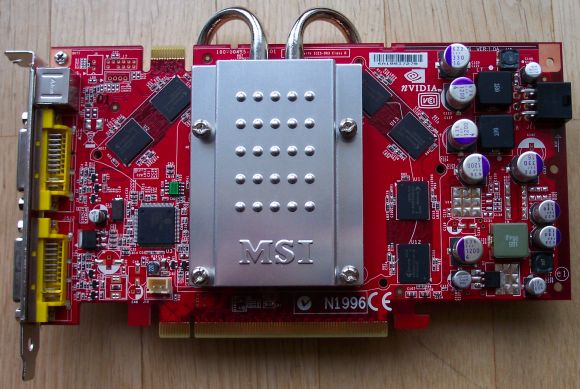
MSI’s backplate is custom insofar as it has, well, MSI’s name on it. The outputs match the AMD reference card’s. Presented with an open-air cooler and with the majority of GPU-transferred heat escaping back into the chassis (unless you have excellent airflow) the two small vents are more decorative than useful. Even under the harshest of load we could only feel a mere zephyr of hot air being exhausted out of the back of our Corsair Graphite 600T chassis.
The magic, so to speak, is all contained on the other side. This version misses out on some of the features present in the Power Edition Frozr IIIs, namely triple over-voltage regulation — GPU, memory and PLL — but still carries what MSI terms as ‘Military Class III’ components. To you and me that’s solid capacitors, solid-state chokes and a Hi-C cap for the GPU, mainly for better voltage regulation.
Shipping with a perfunctory bundle that includes a mini-DP-to-DP adapter, CrossFire cable, D-sub adapter and external Molex connector, the price may win you over.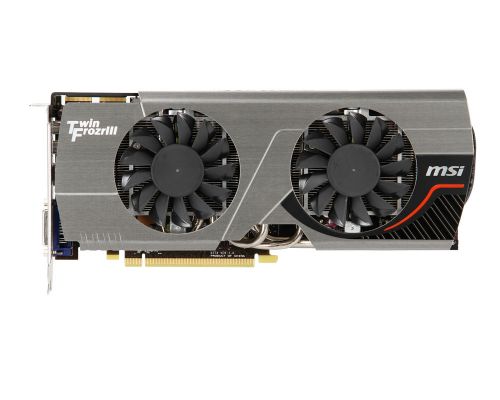 Currently available for just under £320, including VAT, representing just a £20 premium over a bone-stock card, there’s much to like here. Trouble is, this card is going to go up against the also-impressive GeForce GTX 670 GPU, and we’ve tested both in an interesting way…
Currently available for just under £320, including VAT, representing just a £20 premium over a bone-stock card, there’s much to like here. Trouble is, this card is going to go up against the also-impressive GeForce GTX 670 GPU, and we’ve tested both in an interesting way…
MSI AMD Radeon HD7950 Review
NVIDIA graphics card review. Latest images, pricing and NVIDIA GeForce 7950 GT specs. Gaming GPU benchmarked against the biggest PC games like Fortnite, Minecraft and PUBG Should you buy this MSI graphics card?
This NVIDIA graphics card features the NVIDIA GeForce 7950 GT processor. The processor, also known as the GPU, is the most important component in any graphics card. PCGameBenchmark rates processors by how many of the top 1,000 PC games the chip can run. This PC graphics card has a chip that can run 252 of the top 1000 games — so we give it a 25% rating.
For a full list of the games that this card will run and the chance to compare it to similar cards check our graphics card comparison — we have tracked 3 cards with a similar GPU and 3 of them are cheaper than this setup — no need to wait for a sale or Black Friday 2022 to get the best price on a card like this.
You get 3 GB of VRAM on this MSI graphics card and the weight of the full set up is 3.3 lb.
Check out best deals on cheap graphics cards and the latest deals on Amazon.
MSI AMD Radeon HD7950
PCGameBenchmark Rating: 7%
| Best Price: | $419.75 |
|---|
Check latest prices
Network N earns commission from qualifying purchases via Amazon Associates and other programs.
MSI AMD Radeon HD7950 Specs
GPU |
NVIDIA GeForce 7950 GT |
|---|---|
RAM (Memory) |
3 GB RAM |
Weight |
3.3 lb (1.5 kg) |
Dimensions (L x W x H) |
34.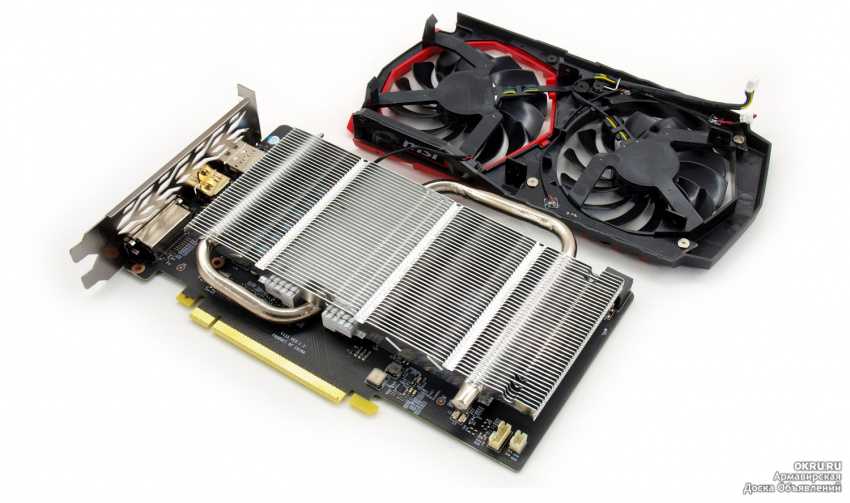 54 cm x 26.42 cm x 7.87 cm 54 cm x 26.42 cm x 7.87 cm13.6 in x 10.4 in x 3.1 in |
Brand |
MSI |
Series |
R7950 TF 3GD5 BE |
Model Number |
R7950 TF 3GD5 BE |
| Best Price: | $419.75 |
|---|
Check latest prices
Network N earns commission from qualifying purchases via Amazon Associates and other programs.
MSI AMD Radeon HD7950 PC Gaming Performance
This graphics card will run 79 of the top PC games. Use PCGameBenchmark’s Rate My PC service to test your current set up and set how it compares.
Can It Run GTA 5?
This MSI graphics card doesn’t meet the recommended system requirements for GTA 5 but it can play the game with lowered settings.
Can It Run Fortnite?
This MSI graphics card doesn’t meet the recommended system requirements for Fortnite but it can play the game with lowered settings.
Can It Run Apex Legends?
This MSI graphics card doesn’t meet the recommended system requirements for Apex Legends but it can play the game with lowered settings.
MSI AMD Radeon HD7950 Features
- AMD Radeon HD7950 GPU
- 3GB 384-bit GDDR5 VRAM
- Mini DisplayPortx2, DVI-I and HDMI
- PCI Express 3.0
- CrossFire ready
- Boost Edition
- Twin Frozr III Thermal Design
- Military Class III Components
MSI AMD Radeon HD7950 DEALS — BEST prices
| Best Price: | $419.75 |
|---|
Check latest prices
Network N earns commission from qualifying purchases via Amazon Associates and other programs.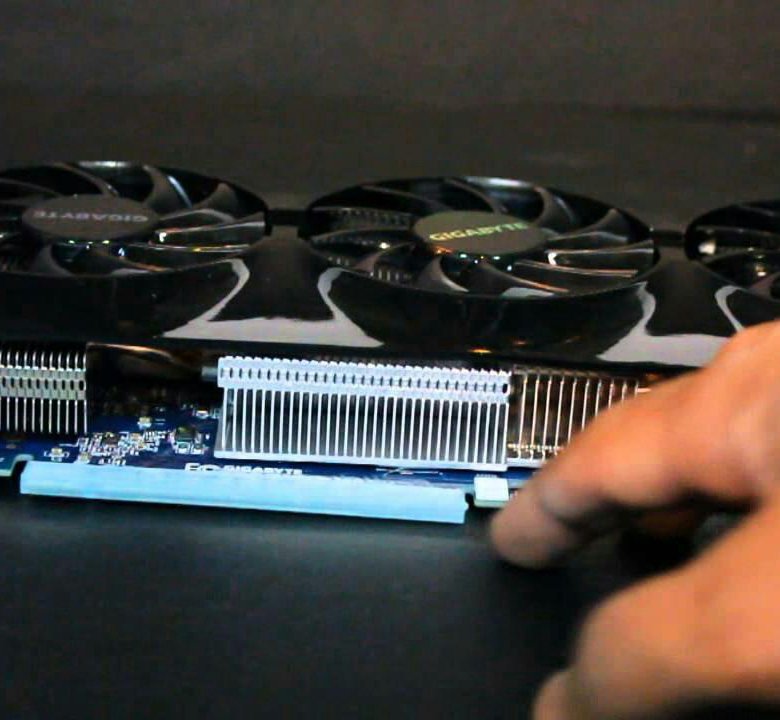
Similar to MSI AMD Radeon HD7950
Here are a few other options…
XFX AMD Radeon HD7950 3 GB DDR5 2DVI/HDM…
Rating: 7%
| $303 |
|
GeForce 7950 GT |
| 3 GB RAM |
XFX FX795ATDJC
Rating: 7%
| $398.98 |
|
GeForce 7950 GT |
| 3 GB RAM |
XFX HD 7950 BLACK Edition
Rating: 7%
$348. 97 97 |
|
GeForce 7950 GT |
| 3 GB RAM |
MSI Radeon HD 7950 Twin Frozr 3GD5/OC review and testing GECID.com. Page 1
::>Video cards
>2012
> MSI R7950 Twin Frozr 3GD5/OC
01-03-2012
Page 1
Page 2
One page
While NVIDIA is just preparing to introduce a new generation of GeForce 600 discrete graphics adapters based on chips manufactured in accordance with the 28nm process technology, the line of video cards of the Radeon HD 7000 family is gradually replenished with new models of different price levels. Most recently, our test lab was visited by a flagship solution based on the Radeon HD 7970 (Tahiti XT) graphics processor, using which we also introduced our readers in detail to the capabilities of the AMD Graphics Core Next architecture. At the moment, this video card continues to be the most powerful single-chip video accelerator on the market, offering users, in addition to a high level of performance, relatively low power consumption, excellent overclocking potential and support for many proprietary AMD technologies. However, not all users who are fond of computer games are ready to pay $550 for a video adapter, besides, for many of them, its capabilities will even be overkill. nine0003
Most recently, our test lab was visited by a flagship solution based on the Radeon HD 7970 (Tahiti XT) graphics processor, using which we also introduced our readers in detail to the capabilities of the AMD Graphics Core Next architecture. At the moment, this video card continues to be the most powerful single-chip video accelerator on the market, offering users, in addition to a high level of performance, relatively low power consumption, excellent overclocking potential and support for many proprietary AMD technologies. However, not all users who are fond of computer games are ready to pay $550 for a video adapter, besides, for many of them, its capabilities will even be overkill. nine0003
Today our test lab received a MSI Radeon HD 7950 Twin Frozr 3GD5/OC video card based on the Tahiti Pro (Radeon HD 7950) graphics chip, which has a number of simplifications compared to the flagship XT chip , and in the hierarchy of the Radeon HD 7000 family is one step lower. First of all, let’s pay attention to the reduction in the number of main «bricks» of the Graphics Core Next architecture — Compute Units (CU) — from 32 to 28 pieces. This, in turn, led to a decrease in the number of stream processors (ALUs) from 2048 to 1792 pieces, as well as texture units from 128 to 112. At the same time, rasterization units (ROP) are still 32. The volume and width of the video memory bus also remained unchanged: 3 GB of GDDR5 memory interact with the graphics core via a 384-bit bus. It’s not surprising that the GPU and memory frequencies of the «reference» solutions based on the Radeon HD 7950 have been reduced relative to the older model. The frequency formula recommended by AMD for the Radeon HD 7950 looks like 800 MHz for the graphics core and 5000 MHz for the video memory. Recall that the «reference» frequencies of the Radeon HD 7970 is equal to 925 MHz for the core and 5500 MHz for the video memory. More detailed characteristics of the novelty in comparison with current competitors and predecessors can be assessed in the table below:
First of all, let’s pay attention to the reduction in the number of main «bricks» of the Graphics Core Next architecture — Compute Units (CU) — from 32 to 28 pieces. This, in turn, led to a decrease in the number of stream processors (ALUs) from 2048 to 1792 pieces, as well as texture units from 128 to 112. At the same time, rasterization units (ROP) are still 32. The volume and width of the video memory bus also remained unchanged: 3 GB of GDDR5 memory interact with the graphics core via a 384-bit bus. It’s not surprising that the GPU and memory frequencies of the «reference» solutions based on the Radeon HD 7950 have been reduced relative to the older model. The frequency formula recommended by AMD for the Radeon HD 7950 looks like 800 MHz for the graphics core and 5000 MHz for the video memory. Recall that the «reference» frequencies of the Radeon HD 7970 is equal to 925 MHz for the core and 5500 MHz for the video memory. More detailed characteristics of the novelty in comparison with current competitors and predecessors can be assessed in the table below:
|
AMD Radeon HD 7970 |
AMD Radeon HD 7950 |
AMD Radeon HD 6970 |
AMD Radeon HD 6950 nine0028 |
NVIDIA GeForce GTX 580 |
|
|
Codename |
Tahiti XT |
Tahiti Pro |
Cayman XT |
Cayman Pro |
GF 110 |
|
Number of stream processors nine0028 |
2048 |
1792 |
1536 |
1408 |
512 |
|
Texture blocks |
128 |
112 |
96 |
88 |
64 |
|
ROPs |
32 |
32 |
32 |
32 |
48 |
|
GPU frequency, MHz |
nine0002 925 |
800 |
880 |
800 |
772 |
|
Shader frequency, MHz |
925 |
800 |
880 |
850 |
|
|
Video memory frequency, MHz |
1375 |
1250 |
1375 |
1050 |
1002 |
|
GDDR5 memory, MB |
3072 nine0028 |
3072 |
2048 |
2048 |
1536 |
|
Video memory interface, bit |
384 |
384 |
256 |
256 |
nine0002 384 |
|
Power Connectors |
1 x 6-pin, |
2 x 6-pin |
1 x 6-pin, |
1 x 6-pin, |
1 x 6-pin, |
|
Recommended power supply, W |
500 |
500 |
550 |
500 |
600 |
So, we move from theory to practical testing. As we mentioned above, today the graphics accelerator MSI Radeon HD 7950 Twin Frozr III / OC , equipped with a proprietary cooling system, came to our laboratory Twin Frozr III and running at slightly higher frequencies than recommended by the GPU manufacturer.
As we mentioned above, today the graphics accelerator MSI Radeon HD 7950 Twin Frozr III / OC , equipped with a proprietary cooling system, came to our laboratory Twin Frozr III and running at slightly higher frequencies than recommended by the GPU manufacturer.
|
Model |
MSI Radeon HD 7950 Twin Frozr III/OC (MSI R7950 Twin Frozr 3GD5/OC) |
|
GPU |
Tahiti Pro |
|
Supported APIs |
Microsoft DirectX 11.1 (Shader Model 5.0), OpenGL 4.2 |
|
Graphics core frequency, MHz |
880 |
|
Memory frequency (effective), MHz |
1250 (5000) |
|
Memory size, MB |
3072 |
|
Memory type |
GDDR5 |
|
Memory bus width, bit |
384 |
|
Tire type |
PCI-E 3. |
|
Maximum resolution |
Up to 6 displays with a maximum resolution of 8192 x 8192 |
|
Image output interfaces |
1x Dual-Link DVI |
|
Support for HDCP and HD video decoding |
Yes |
|
Minimum power supply requirement, W |
500 |
|
Dimensions, mm |
261 x 111 |
|
Drivers |
|
|
Manufacturer website |
http://ua. |
From the specs table, we can see that we have a significantly redesigned version of the AMD Radeon HD 7950 graphics accelerator.50 Twin Frozr 3GD5/OC has a noticeable factory overclock. So, instead of the reference 800 MHz, the graphics core operates at a frequency of 880 MHz (an increase of 10%), which is quite good for factory overclocking. We also note that, just like the Radeon HD 7970, the new product supports the new PCI-E 3.0 standard. We will talk about the practical benefits of the features of the MSI Radeon HD 7950 Twin Frozr 3GD5/OC video card a little later, but for now, traditionally, we will start our acquaintance with the product by looking at the packaging.
The medium sized box that comes with the MSI Radeon HD 7950 Twin Frozr III/OC graphics card is blue-gray and is very similar to the packaging of MSI’s Hawk and Lightning graphics accelerators.
It is also shaped like a case and has a hinged top cover that allows the user to view the product inside through a clear plastic window without removing it from the box. In addition, the manufacturer used the place on the hinged cover, as well as around the window, to describe the characteristics and features of the solution. Let’s dwell on them in more detail:
In addition, the manufacturer used the place on the hinged cover, as well as around the window, to describe the characteristics and features of the solution. Let’s dwell on them in more detail:
-
In the production of the video card, components of the so-called «military» class were used, corresponding to the concept of Military Class III: high-quality solid-state and tantalum capacitors, chokes with ferrite cores, which should have a positive effect on the overclocking potential of the MSI Radeon HD 7950 Twin Frozr III / OC and reduce the heat dissipation of the circuit nutrition;
-
The voltage values on the GPU, as well as the speed of rotation of the cooler fans, can be changed by the user using the proprietary MSI Afterburner utility, which is included in the video card delivery package; nine0003
-
The proprietary Twin Frozr III cooling system using five heat pipes, according to the manufacturer, should cool the GPU 10 degrees more efficiently than the «reference» cooling system developed by AMD engineers, while remaining 13.
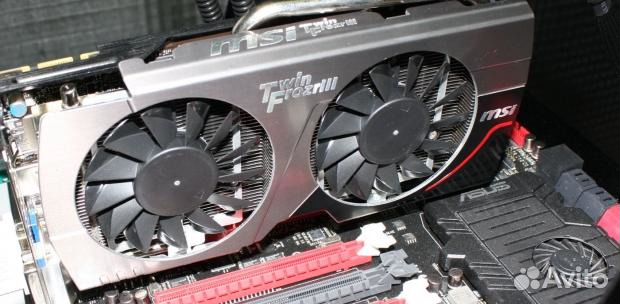 7 dB quieter;
7 dB quieter; -
The use of a nickel-plated copper base, efficient heat pipes and branded Propeller Blade fans are also mentioned separately. nine0003
The reverse side of the package is less informative: here the user can only get acquainted with the minimum system requirements for a computer in which it is planned to install the MSI Radeon HD 7950 Twin Frozr III / OC, as well as the most basic characteristics of the video card, which are presented on 29 languages (including Russian). Note that the power supply in a system with an MSI Radeon HD 7950 Twin Frozr III / OC graphics card must have a power of at least 500 W and be equipped with two 6-pin PCI-E Power power connectors. nine0003
Disk with drivers and proprietary MSI Afterburner utility, which allows overclocking the video card;
User’s manual and a booklet with descriptions of proprietary technologies;
mini DisplayPort to DisplayPort adapter;
DVI-to-VGA adapter; nine0003
Two adapters from two 4-pin peripheral power connectors to one 6-pin video card power connector;
CrossFireX Flexible Bridge.
The package contains everything you need to operate the video card, however, without any bonuses or nice additions. For a video card costing about $500, such a package looks rather poor, because there is not even an HDMI cable. However, this approach has recently become more common among most video card manufacturers, because it allows you to slightly reduce the final price of the product. nine0003
The following interfaces are provided for displaying images on the MSI Radeon HD 7950 Twin Frozr III / OC video card: , plasma panel or projector. It is also important that solutions based on the Radeon HD 7950 support ultra-high resolution monitors and plasma panels (7680 × 4320 pixels), which at the moment is a good start for the future. We also recall that thanks to the support of AMD Eyefinity II technology, up to 6 monitors with a total resolution of up to 819 can be connected to the considered graphics accelerator.2 x 8192 dots, however, to connect more than three image output devices, you will need to purchase additional active adapters.
The printed circuit board is made on dark brown textolite and has a length of 26.1 cm, which will allow you to install the MSI Radeon HD 7950 Twin Frozr III / OC video card in almost any modern gaming case. Compared to the «reference» sample, MSI engineers only slightly reworked the design of the board, primarily by improving the component base. At the same time, without a doubt, the reference sample of the Radeon HD 79 was taken as the basis50, developed by AMD.
The power stabilization module is made according to the 6 + 1-phase scheme, and the CHiL CHL8228G chip is used as a PWM controller. As we already mentioned, during the production process of the MSI Radeon HD 7950 Twin Frozr III / OC video card, components are used that correspond to the Military Class III concept (high-quality solid-state and tantalum capacitors, chokes with ferrite cores), which should positively affect the overclocking potential, ensure a long service life video cards and less heating of the elements of the power circuits. nine0003
nine0003
In addition to the PCI-Express bus, the video card is powered by two 6-pin connectors on the side of the video card.
Two CrossFireX bridge connectors allow multiple AMD GPU-based graphics cards to be connected together to compute visual effects together.
Next to the CrossFireX connectors is a small BIOS switch that was first introduced in the Radeon HD 69 line of solutions00. In the case of the MSI Radeon HD 7950 Twin Frozr III / OC, this “switcher” allows you to activate one of two microcircuits with firmware, in one of which the GPU and memory frequencies correspond to the “reference”, and in the other, the BIOS is wired with increased frequencies.
The reverse side of the board is almost devoid of elements. Here we found only the cooling system mounts and a few VRM module chips.
This is what the Tahiti Pro graphics chip looks like, made according to the standards of the 28 nm process, which is the central part of the video card in question.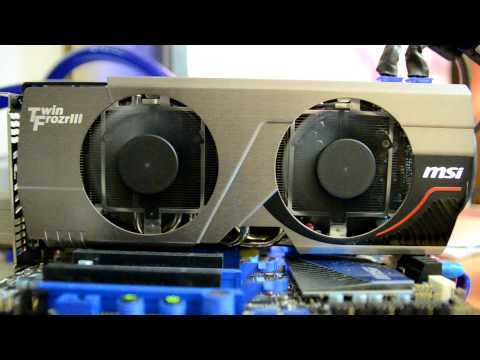 As we already mentioned, it includes 1792 unified pipelines and 32 rasterization units, and data exchange between the graphics core and memory is carried out via a 384-bit bus. The screenshot above shows its main characteristics.
As we already mentioned, it includes 1792 unified pipelines and 32 rasterization units, and data exchange between the graphics core and memory is carried out via a 384-bit bus. The screenshot above shows its main characteristics.
Separately, I would like to note that recently the GPU-Z utility allows you to determine such a characteristic of a graphics chip as ASIC Quality. A high value of this parameter indicates a low GPU supply voltage and allows us to hope for a better overclocking potential when using air and liquid cooling. At the same time, for experiments with overclocking using extreme cooling methods (liquid nitrogen, helium, dry ice), video cards with a low ASIC Quality score are better suited. In our case, the ASIC Quality value was 77.3%. nine0003
GDDR5 video memory with a total capacity of 3 GB is assembled using twelve 256 MB chips manufactured by Hynix. The chips are marked H5GQ2h34MFR T2C and, according to the documentation, can operate at an effective frequency of up to 6 GHz. Considering that the memory in the tested video card, even with factory overclocking, operates at a frequency of 5000 MHz, it makes sense to try to speed it up during manual overclocking.
Considering that the memory in the tested video card, even with factory overclocking, operates at a frequency of 5000 MHz, it makes sense to try to speed it up during manual overclocking.
For the MSI Radeon HD 7950 Twin Frozr III / OC video card, the manufacturer used the proprietary Twin Frozr III cooling system, which we have already had the opportunity to familiarize ourselves with on the example of other products from the Taiwanese vendor. The cooler is in contact with the graphics core through a nickel-plated copper plate and consists of a massive aluminum radiator pierced by two 8 mm and three 6 mm nickel-plated heat pipes.
The radiator is blown by two Propeller Blade fans with an impeller diameter of 80 mm. According to the manufacturer, due to the special shape of the blades, these «propellers» generate 20% more powerful airflow compared to «normal» fans at a lower noise level. nine0003
A separate metal plate is designed to remove heat from the memory chips and field-effect transistors (MOSFET) of the video card power system, which are in contact with it through special thermal pads. Such a decision by the developers will not be superfluous at all, given the focus of the MSI Radeon HD 7950 Twin Frozr III / OC on gamers and overclocking enthusiasts.
Such a decision by the developers will not be superfluous at all, given the focus of the MSI Radeon HD 7950 Twin Frozr III / OC on gamers and overclocking enthusiasts.
To increase the efficiency of the cooler, the contact of the heatpipes, both with the nickel-plated copper plate and with the radiator, is improved by solder. nine0003
To evaluate the efficiency of the cooling system used, we ran our standard set of tests using the FurMark utility. The tests were carried out in two cooler operating modes: automatic control and maximum fan speed.
In the maximum load mode, the temperature of the graphics core did not exceed 70 degrees, which is a very good result. At the same time, the fan worked at 56% of its power, producing a noise level that was almost imperceptible against the general background of the system. nine0003
After we set the fan speed to maximum and tested again, we recorded a decrease in the maximum temperature of the GPU by 7 degrees, and the noise level emitted by the cooler, while we would characterize it as “average «.
When there is no load, the graphics core and memory frequencies are automatically reduced, which leads to lower power consumption and heat generation. The cooler in this mode works almost silently, and the temperature of the graphics core does not exceed 39degrees.
In general, the Twin Frozr III cooling system used for the video card in question, , demonstrated high cooling efficiency at a moderate noise level. Moreover, if the cooler does not suit the user, the developers suggest using the proprietary MSI Afterburner utility and manually adjusting the dependence of the fan speed on the GPU temperature.
Test and Review: MSI Radeon HD 7950 Twin Frozr III
The Twin Frozr cooling system is used on many MSI graphics cards. The manufacturer over the years has improved its system, which has become really quiet and efficient. Video cards based on «Tahiti» GPUs quickly lost their own cooling system, which in the case of MSI gave way to aluminum fins, heat pipes and two large axial fans. As a final touch, the manufacturer decided to raise the clock speeds to 1792 stream processors and 3072 MB of GDDR5 memory that run at 880 and 1300 MHz, respectively. In our review, you will find out if the price of 430 euros that MSI is asking for the Radeon HD 7950 Twin Frozr III justifies itself (price in Russia is unknown at the time of publication).
As a final touch, the manufacturer decided to raise the clock speeds to 1792 stream processors and 3072 MB of GDDR5 memory that run at 880 and 1300 MHz, respectively. In our review, you will find out if the price of 430 euros that MSI is asking for the Radeon HD 7950 Twin Frozr III justifies itself (price in Russia is unknown at the time of publication).
Nvidia is only a few weeks away from introducing a competing «Kepler» based solution, and the delay has allowed AMD to announce an almost complete line of new graphics cards. The announcement of the Radeon HD 7970 marked the debut of the «Southern Islands» family, but then «younger» models codenamed «Cape Verde» entered the market, and a little later, the «Pitcairn» GPU. They were aimed at different price segments of the market, as a result of which the old line of Radeon HD 6000 quickly went into oblivion. In addition, graphics card partners were able to stand out from Nvidia’s competitors not only with a better price/performance ratio (after all, price drops were inevitable), but also with higher clock speeds and efficient cooling systems. MSI has also taken this path with a Radeon HD 79 graphics card.50 Twin Frozr III with its own cooling system. The flagship model is still the MSI Radeon HD 7970 Lightning, which should be officially released in the coming days, and even one will be equipped with a new generation Twin Frozr cooling system.
MSI has also taken this path with a Radeon HD 79 graphics card.50 Twin Frozr III with its own cooling system. The flagship model is still the MSI Radeon HD 7970 Lightning, which should be officially released in the coming days, and even one will be equipped with a new generation Twin Frozr cooling system.
Cooler occupies two height slots. For the removal of heat from the GPU, not only numerous aluminum fins are responsible, but also five heat pipes with a diameter of up to 8 mm and two axial fans with a diameter of up to 80 mm. Various video card components and memory chips are passively cooled. MSI promises 13.7 dB(A) lower noise levels and 10°C cooler temperatures compared to AMD’s reference graphics card. In order for the video card to get some increase in performance, the manufacturer decided to slightly increase the clock frequencies of the «Tahiti Pro» graphics processor to the level of 880/1300 MHz. We received an increase, respectively, of 80 and 50 MHz for the GPU and memory compared to the reference level.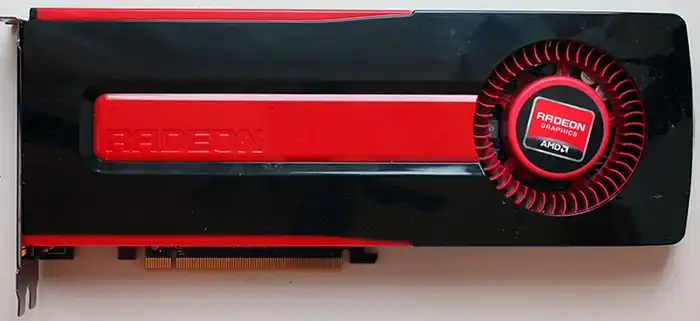 nine0003
nine0003
To be honest, in the past the third generation of the Twin Frozr cooler hasn’t always shown convincing results. Depending on the model, sometimes the cooler was quite noisy — and not only under load. In this article, we will try to find out if MSI has been able to improve the noise situation with the Radeon HD 7950 Twin Frozr III graphics card.
» Photostrecke
But before we move on to the tests, let’s talk about the architecture of the video card and its characteristics. MSI Radeon HD 79 graphics card50 Twin Frozr III is based on AMD’s «Tahiti Pro» GPU, which is manufactured in 28nm and contains 4.3 billion transistors. The GPU contains 1792 stream processors, which are organized into 28 Compute Units (CUs). Each CU has four SIMD blocks, which in turn contain 16 stream processors (ALUs). Four texture units are connected to each CU, which gives the Radeon HD 7950 a total of 112 texture units.
AMD decided to keep the memory interface as in the «older» Radeon HD 79 model70, that is, we get six 64-bit memory controllers and 32 raster operations pipelines (ROPs). Thus, GDDR5 memory chips are connected via a 384-bit bus. But the clock speeds have been slightly reduced compared to the HD 7970, with the GPU at 800 MHz and the memory at 1250 MHz. In the case of an MSI video card with a Frozr III Edition cooler, as we already mentioned, there is a slight factory overclocking to 880/1300 MHz for the GPU and memory, respectively. Instead of a boring reference cooler with a radial fan, MSI’s graphics card uses its own cooler with two axial fans. nine0003
Thus, GDDR5 memory chips are connected via a 384-bit bus. But the clock speeds have been slightly reduced compared to the HD 7970, with the GPU at 800 MHz and the memory at 1250 MHz. In the case of an MSI video card with a Frozr III Edition cooler, as we already mentioned, there is a slight factory overclocking to 880/1300 MHz for the GPU and memory, respectively. Instead of a boring reference cooler with a radial fan, MSI’s graphics card uses its own cooler with two axial fans. nine0003
The technical specifications of the graphics card are shown in the following table:
| MSI Radeon HD 7950 Twin Frozr III | |
|---|---|
| Retail price | 430 euros in Europe Not yet available in Russia |
| Product page | MSI Radeon HD 7950 Twin Frozr III |
| Specifications | |
| GPU | |
| Process | 28 nm |
| Number of transistors | 4. 3 billion 3 billion |
| GPU clock speed | 880 MHz |
| Memory clock | 1300 MHz |
| Memory type | GDDR5 |
| Memory capacity | 3072 MB |
| Memory interface | 384 bit |
| Memory bandwidth | 249.6 GB/s |
| DirectX version | 11.1 |
| Stream Processors | 1792 (1D) |
| Stream processor frequency | 880 MHz |
| Texture blocks | 112 |
| ROP | 32 |
| Pixel fill rate | 25.6 Gpixel/s |
| SLI/CrossFire | CrossFireX |
Thanks to higher clock speeds (80 MHz increase for GPU and 50 MHz increase for memory), we get an increase in pixel fill rate and memory bandwidth compared to the reference version of the video card.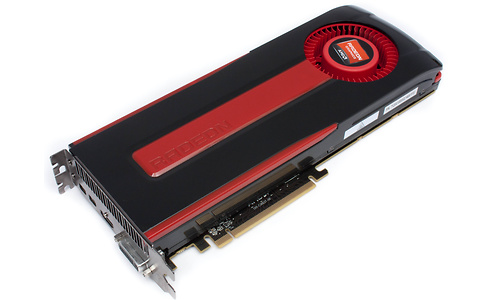

 0 x16
0 x16 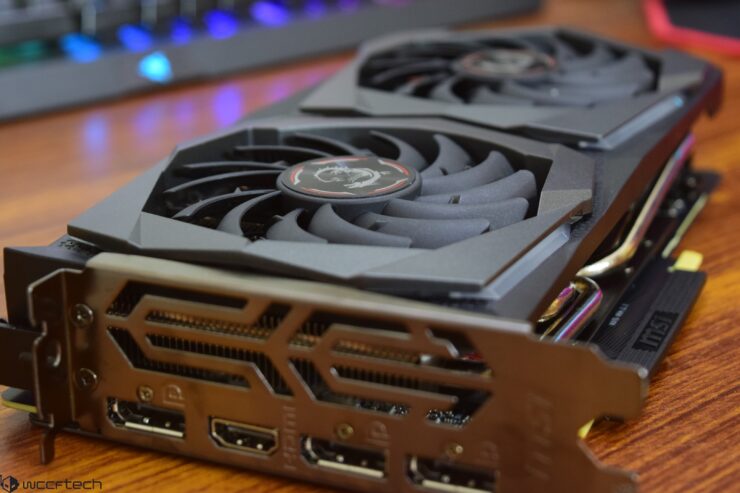 msi.com/
msi.com/